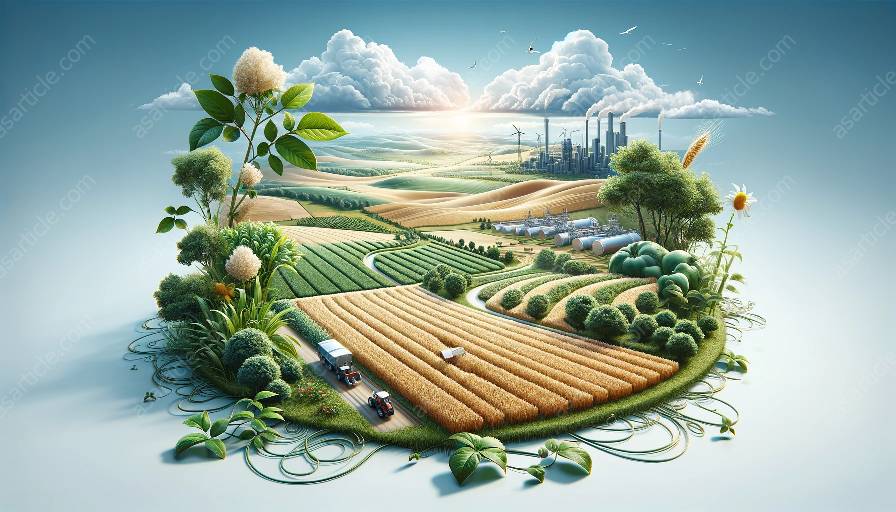Biochar, a carbon-rich material produced from biomass, has garnered significant attention for its potential to address environmental challenges and benefit agriculture and bioenergy production. This topic cluster delves into the production and application of biochar, its relevance to bioenergy and agricultural waste management, and its role in advancing agricultural sciences.
Biochar Production
Biochar is produced through a process called pyrolysis, which involves heating biomass in a low-oxygen environment to yield a stable form of carbon with high surface area and porosity. The production process typically includes the following steps:
- Feedstock Preparation: Various biomasses such as wood chips, crop residues, and organic waste are prepared for pyrolysis.
- Pyrolysis: The prepared biomass undergoes heating in a controlled environment, which leads to the release of volatile gases and the formation of biochar.
- Gas Capture and Condensation: The volatile gases, often referred to as syngas, can be captured and utilized for bioenergy production through processes like gasification.
- Biochar Activation (Optional): Some biochar is processed further to enhance its properties for specific applications, such as activation with steam or chemicals to modify its surface characteristics.
Biochar Benefits and Quality
Biochar production offers several benefits, including carbon sequestration, waste management, and soil improvement. The quality of biochar is influenced by factors such as feedstock type, pyrolysis temperature, and activation methods, which impact its chemical composition, surface area, and porosity. High-quality biochar has the potential for diverse applications in agriculture, environmental remediation, and bioenergy production.
Biochar Application
The application of biochar spans across various domains, with notable implications in agriculture, bioenergy, and environmental sustainability:
- Agricultural Soil Amendment: Biochar serves as a soil conditioner, enhancing water and nutrient retention, reducing soil acidity, and promoting microbial activity. Its incorporation in agricultural soils can improve crop productivity and long-term soil health.
- Bioenergy Production: Biochar co-production in bioenergy facilities provides a sustainable approach to converting organic residues into valuable biochar and bioenergy products. The integration of biochar as a co-product enhances the overall efficiency and environmental benefits of bioenergy systems.
- Environmental Remediation: Biochar has demonstrated potential in mitigating environmental pollution by adsorbing contaminants in soil and water, thereby aiding in remediation efforts for polluted sites and industrial wastewater treatment.
- Soil Science and Fertility: Biochar studies contribute to understanding its influence on soil properties, nutrient cycling, and carbon sequestration, thereby enriching the knowledge base of soil science and agricultural sustainability.
- Crop Physiology and Productivity: Research on biochar's impact on crop growth, yield, and tolerance to environmental stressors provides insights for optimizing agricultural practices and crop management strategies.
- Sustainability and Climate Mitigation: The integration of biochar in sustainable agricultural systems aligns with climate-smart practices, fostering resilience to environmental changes while mitigating greenhouse gas emissions through carbon sequestration.
Biochar in Agricultural Sciences
Within agricultural sciences, biochar research has gained prominence due to its multifaceted implications:
Conclusion
In conclusion, biochar production and application have emerged as promising avenues for addressing the intertwined challenges of agricultural waste management, bioenergy production, and sustainable agricultural practices. With its potential to sequester carbon, enrich soils, and contribute to renewable energy production, biochar stands at the intersection of environmental conservation and agricultural advancement, offering interdisciplinary solutions to global sustainability challenges.

